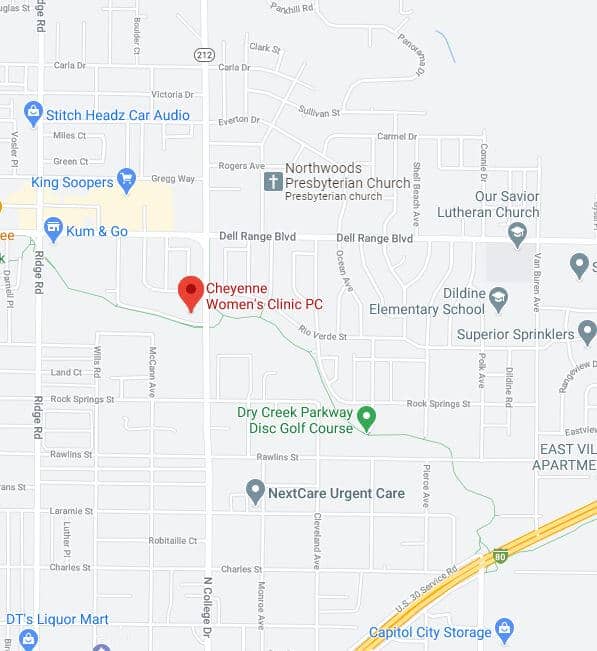Endometriosis is a common health problem for women that occurs when the tissue that lines the uterus (called the endometrium) grows outside the uterus. Most often, endometriosis is found implanted on the:
- Peritoneum – the membrane that lines your abdominal cavity and surrounds your internal organs
- Ovaries
- Fallopian tubes
- The outside linings of your uterus, bladder, ureters, intestines, and rectum
- The area behind your uterus
About 10% of women in their reproductive years have endometriosis, and it’s most often diagnosed in women in their 30s and 40s. No one knows for sure what causes it.
How Does It Work?
Just like the lining of the uterus, endometriosis implants respond to changes in your estrogen levels each month as part of your menstrual cycle. The areas of tissue grow, then break down and bleed. This cycle of growing and bleeding can irritate the surrounding tissue on which the endometriosis is implanted. This can cause inflammation and lead to the formation of scar tissue called adhesions. Sometimes these adhesions can even cause organs to stick together. The bleeding, inflammation, and scarring can cause pelvic or abdominal pain, especially before and during your menstrual period.
About 40% of women who have problems with infertility have endometriosis. The endometriosis implants can interfere with the movement of sperm and eggs and your fallopian tubes may even become blocked by adhesions or scar tissue.
Symptoms of Endometriosis
The most common symptom of endometriosis is long-term pelvic pain that gets worse right before and during your menstrual period.
Other endometriosis symptoms include:
- Very painful menstrual cramps that may get worse over time
- Chronic lower back and pelvic pain
- Intestinal pain
- Pain during or after sex
- Painful bowel movements or painful urination during menstrual periods
- Spotting or bleeding between menstrual periods
- Infertility
- Fatigue
- Diarrhea, constipation, bloating, or nausea, especially during menstrual periods
- Heavy periods
However, many women with endometriosis have no symptoms at all.
Endometriosis Pain
The pain from endometriosis comes from the nature of the endometrial tissue. Just like the lining of the uterus, endometriosis implants respond to changes in your estrogen levels each month as part of your menstrual cycle. Every month, hormones cause the build-up of tissue and blood vessels in the uterus in case you become pregnant. If you don’t get pregnant, your uterus sheds this tissue and blood during your menstrual period.
The endometrial tissue of endometriosis responds to hormones the same way, only the tissue and blood are shed within the body. This can cause inflammation and lead to the formation of scar tissue called adhesions. Sometimes these adhesions can even cause organs to stick together. The bleeding, inflammation, and scarring can cause pelvic or abdominal pain, especially before and during your menstrual period. All of this worsens over time as the endometrial tissue grows.
Diagnosis
To diagnose endometriosis, your doctor will start by performing a pelvic exam. But the only sure way to tell if you have endometriosis is through a minor surgical procedure called a laparoscopy. The doctor inserts an instrument called a laparoscope through small incisions in your pelvic cavity that will allow him or her to look inside. If any abnormal tissue is present, he or she may remove a small amount for a biopsy to learn more about it.
Treating Endometriosis
Doctors usually treat endometriosis with medication or surgery. If your endometriosis is severe, you may need both.
- Pain relievers: NSAIDs can treat the pain and reduce the inflammation associated with endometriosis.
- Hormonal medications: Gonadotropin-releasing hormone (GnRH) agonist medications such as Lupron Depot are now the gold standard treatment. Birth control pills can help slow the growth of endometriosis implants and prevent new adhesions from forming, but they usually won’t eliminate the tissue that’s already there.
- Surgery: To remove the endometriosis implants usually requires surgery. This will usually take care of the pain related to endometriosis and may also reduce your chance of infertility. But even with surgery, 40 to 80% of women experience pain from endometriosis again within two years. The more severe your case, the more likely it is to return. Taking hormonal medications after surgery may help to extend your time without endometriosis.
- Hysterectomy: A last-resort option for treating severe pain that doesn’t go away after surgery or medication, especially for women not planning to have any or any more children, is a hysterectomy that also includes removing your ovaries. With your ovaries removed, the endometriosis is less likely to return. If you choose to keep your ovaries, having the endometriosis implants removed at the same time as your hysterectomy reduces the chance that the endometriosis will come back.
If you have been experiencing chronic pelvic pain that gets worse before or during your periods or recognize the symptoms above, you could have endometriosis. Talk to your provider about your symptoms and he or she will create the best plan for diagnosis and treatment. Make an appointment by calling 307.637.7700.







